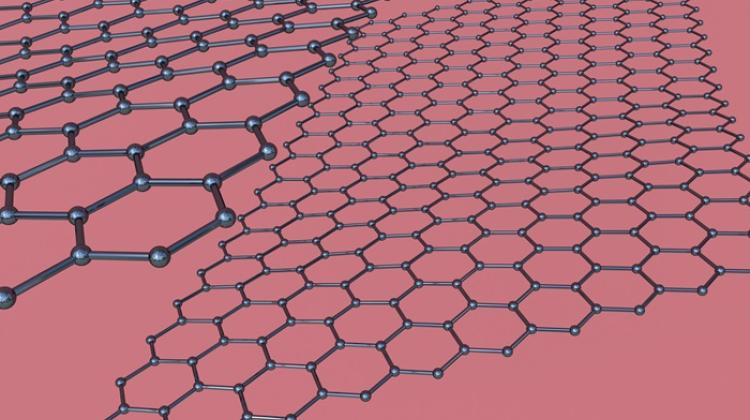The world's thinnest free-standing iron membranes thanks to graphene
For the first time, scientists produced stable, single atom thick membranes made of metal (iron). These two-dimensional structures suspended in graphene pores have unique properties, useful, for example, in electronics. Polish researcher was involved in the study.
The achievement, described in March in the weekly "Science", is the result of an international research team led by Prof. Mark Ruemmeli. The study involved researchers from Germany, Poland, and South Korea, as announced on the Centre of Polymer and Carbon Materials PAS in Zabrze (CMPW PAN) website.
Graphene - single atom thick carbon structure - has entirely different properties than graphite, which is also a carbon structure, but thicker. Scientists investigate the properties of other materials in two-dimensional structures. They were curious, for example, how monatomic thickness metal layer would behave. So far, obtaining stable, two-dimensional metal structures unattached to any substrate, seemed out of reach - normally metals form a three-dimensional crystal lattice, which does not have a layered structure. However, researchers have resorted to deception and put graphene to use.
Scientists used the way iron atoms move on the surface of graphene when irradiated with electron beam in a transmission electron microscope (TEM). When free iron atoms stumbled upon the pores of the structure of graphene, they would begin to fill them, forming characteristic membranes. Scientists noticed that iron atoms that moved into the pore structure were arranged in a square crystal lattice.
For now, the iron membranes are so small that you can not see them with the naked eye - each membrane is housed in a single graphene pore. These study is just the beginning of research on two-dimensional metal layers. Researchers, however, have already demonstrated that it is possible to obtain free-standing iron membranes which previously could not be obtained.
Dr . Alicja Bachmatiuk from the Centre of Polymer and Carbon Materials PAS was involved in the study. In an interview with PAP she explained that her task was to determine whether the iron atoms actually deposited in graphene pores, or perhaps there was a chemical reaction and iron carbide formed. "It turned out that it was pure iron" - she said. Alice Bachmatiuk conducted her research using a high resolution transmission electron microscopy (HRTEM) with electron energy loss spectroscope (EELS).
Two-dimensional, metallic membranes have unique properties that still require a lot of research. However, in earlier theoretical work scientists have demonstrated that iron membranes - compared with the three-dimensional metal structures - have an increased magnetic moment, which makes this newly developed material suitable for use in the photonics, electronics and magnetic memory carriers.
The study involved scientists from the Leibniz Institute for Solid State Physics in Dresden and Dresden University of Technology (Germany), Centre of Polymer and Carbon Materials PAS in Zabrze and the IBS Center for Integrated Nanostructure Physics, Institute for Basic Science (IBS), Sungkyunkwan University in Suwon (South Korea).
PAP - Science and Scholarship in Poland
lt/ ula/ mrt/
tr. RL
Przed dodaniem komentarza prosimy o zapoznanie z Regulaminem forum serwisu Nauka w Polsce.

















